-
 Bitcoin
Bitcoin $105,501.6525
-0.10% -
 Ethereum
Ethereum $2,529.6713
-1.24% -
 Tether USDt
Tether USDt $1.0004
0.00% -
 XRP
XRP $2.1446
0.26% -
 BNB
BNB $646.1371
-1.12% -
 Solana
Solana $145.2792
-1.37% -
 USDC
USDC $0.9999
0.00% -
 Dogecoin
Dogecoin $0.1777
-0.35% -
 TRON
TRON $0.2714
0.47% -
 Cardano
Cardano $0.6250
-1.99% -
 Hyperliquid
Hyperliquid $40.3145
-3.91% -
 Sui
Sui $2.9634
-2.57% -
 Chainlink
Chainlink $13.2124
-0.74% -
 Bitcoin Cash
Bitcoin Cash $434.5238
-2.23% -
 UNUS SED LEO
UNUS SED LEO $9.1265
1.17% -
 Stellar
Stellar $0.2570
-0.75% -
 Avalanche
Avalanche $18.9874
-1.28% -
 Toncoin
Toncoin $2.9622
-1.53% -
 Shiba Inu
Shiba Inu $0.0...01205
-0.13% -
 Litecoin
Litecoin $85.4847
-0.43% -
 Hedera
Hedera $0.1530
-2.97% -
 Polkadot
Polkadot $3.7881
-0.78% -
 Ethena USDe
Ethena USDe $1.0004
0.00% -
 Monero
Monero $312.2268
1.39% -
 Dai
Dai $1.0000
0.01% -
 Bitget Token
Bitget Token $4.5299
-0.27% -
 Uniswap
Uniswap $7.3753
-2.49% -
 Pepe
Pepe $0.0...01100
-1.54% -
 Pi
Pi $0.6138
5.50% -
 Aave
Aave $275.9702
-4.58%
What should I do if the WR indicator is blunted below 20? Will it continue to rise?
When the Williams %R drops below -20 in crypto trading, it signals oversold conditions, but traders should confirm with other indicators like volume or moving averages before assuming a price reversal.
Jun 14, 2025 at 04:01 pm
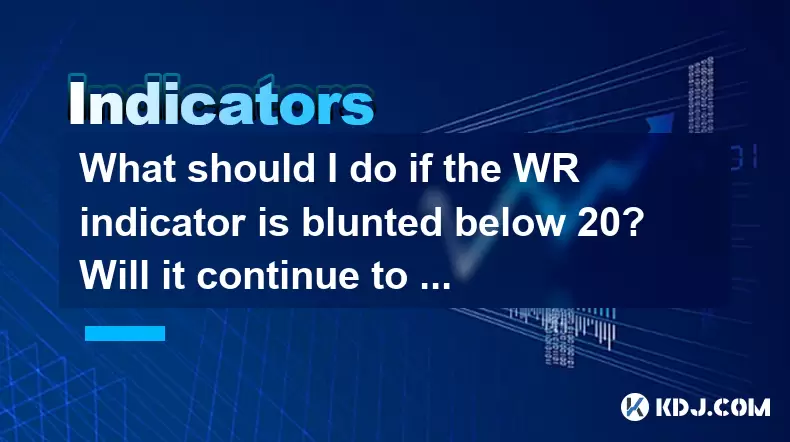
Understanding the WR Indicator and Its Significance
The Williams %R (WR) indicator is a momentum oscillator used in technical analysis to identify overbought or oversold conditions in financial markets, including cryptocurrency trading. It ranges from 0 to -100, with values above -20 indicating overbought conditions and values below -80 signaling oversold conditions. When the WR indicator is blunted below 20, it suggests that the market may be entering an oversold zone, potentially signaling a reversal or a bounce in price.
In crypto markets, where volatility is high and trends can change rapidly, understanding how to interpret such signals becomes crucial for traders. The WR indicator's bluntness below 20 often raises questions about whether this is a reliable sign of an upcoming upward movement or simply a false signal due to extreme market conditions.
What Does It Mean When WR Is Below 20?
When the WR value drops below -20, it indicates that the asset has been trading near its lowest price over the lookback period, which is typically set at 14 periods. This condition is interpreted as oversold, suggesting that selling pressure might be exhausted and buyers could soon step in.
However, in highly volatile environments like cryptocurrencies, prices can remain oversold for extended periods during strong downtrends. Therefore, seeing the WR below 20 doesn't automatically guarantee a reversal; it only highlights potential exhaustion of sellers. Traders should not rely solely on this signal but combine it with other tools like moving averages, volume indicators, or candlestick patterns for confirmation.
How to Confirm a Potential Reversal After WR Drops Below 20
- Identify key support levels using horizontal or trendline support zones.
- Look for bullish candlestick formations such as hammer, bullish engulfing, or morning star patterns.
- Check for divergence between price and WR — if the price makes a new low but WR does not, it may indicate weakening bearish momentum.
- Use volume indicators like OBV (On-Balance Volume) or Volume Oscillator to confirm buying interest.
- Observe if major moving averages (like the 50 or 200 EMA) are aligning with potential reversal points.
These steps help filter out false signals and increase the probability of making informed trading decisions when the WR indicator shows bluntness below 20.
Does WR Bluntness Below 20 Always Lead to a Rise?
No, the WR dropping below 20 does not always result in a price rise. In strong downtrends, especially in crypto markets influenced by macroeconomic news or regulatory changes, the price can continue falling despite being technically oversold. This phenomenon is commonly referred to as "getting more oversold" and is a critical concept for traders to understand.
For example, during bearish phases, large institutional selling or panic among retail investors can push prices lower even when short-term indicators like WR suggest oversold conditions. Relying solely on WR without considering the broader trend or sentiment can lead to premature entries and losses.
Therefore, it’s essential to assess the overall market structure, trend strength, and external factors before assuming that a WR reading below 20 will trigger a price rebound.
Practical Steps to Trade When WR Is Below 20
If you observe the WR indicator blunted below 20 and suspect a possible reversal, here’s how you can approach your trade:
- Monitor the price action closely for signs of rejection at key support levels.
- Wait for a bullish confirmation candle to close before entering a long position.
- Place a stop-loss slightly below the recent swing low to manage risk.
- Set a take-profit level based on previous resistance levels or Fibonacci extensions.
- Consider scaling into the position if multiple timeframes align and show similar setups.
- Track volume during the bounce — increased volume on the upside confirms stronger buyer participation.
By following these steps, traders can avoid emotional decisions and enter trades with a structured plan when the WR indicator is showing bluntness below 20.
Common Misinterpretations of WR Signals in Crypto Markets
Many novice traders misinterpret the WR readings because they expect immediate reversals after seeing the indicator drop below 20. However, in fast-moving crypto markets, such expectations can be misleading. Here are some common misconceptions:
- Believing that a WR below 20 always means the price will reverse immediately.
- Ignoring the context of the larger trend and focusing only on short-term signals.
- Entering trades too early without waiting for additional confirmation.
- Not adjusting WR settings to suit different cryptocurrencies or timeframes.
- Failing to incorporate risk management strategies alongside WR-based entries.
Avoiding these pitfalls requires discipline and a deeper understanding of how the WR indicator behaves across various market conditions.
Frequently Asked Questions
Q: Can I use WR alone to make trading decisions in crypto?
A: While WR is a valuable tool, relying solely on it can lead to inaccurate signals. Combine it with other indicators like RSI, MACD, or volume metrics for better accuracy.
Q: What timeframes work best with the WR indicator in crypto trading?
A: Shorter timeframes like 1-hour or 4-hour charts tend to give more frequent signals, while daily charts offer fewer but more reliable ones. Choose based on your trading style.
Q: How do I adjust the WR settings for different cryptocurrencies?
A: You can modify the lookback period (default is 14). For more volatile coins, increasing it to 20 or 21 may smooth out noise and provide clearer signals.
Q: Is WR suitable for all types of crypto assets?
A: WR works well for most liquid and moderately volatile cryptocurrencies. However, for extremely volatile altcoins, it may generate excessive false signals unless filtered with other tools.
Disclaimer:info@kdj.com
The information provided is not trading advice. kdj.com does not assume any responsibility for any investments made based on the information provided in this article. Cryptocurrencies are highly volatile and it is highly recommended that you invest with caution after thorough research!
If you believe that the content used on this website infringes your copyright, please contact us immediately (info@kdj.com) and we will delete it promptly.
- Coinbase (COIN) filed a brief in the U.S. Supreme Court case involving an Internal Revenue Service request for data
- 2025-06-15 09:25:11
- The race to launch altcoin and meme coin spot ETFs is heating up, with a mind-blowing 72 filings so far, including ones for dogecoin, XRP, and $TRUMP. However, not all of these have an equal chance of approval.
- 2025-06-15 09:25:11
- Uniswap (UNI) Draws Market Attention After Moving 9M Tokens to Coinbase Prime
- 2025-06-15 09:20:12
- Floki (FLOKI/USD) Up 7% in the Past 24 Hours as Bullish Momentum and New Utility Drive Price Action
- 2025-06-15 09:20:12
- PayPal Just Joined a Not-So-Exclusive Club — It Is the Latest Cryptocurrency Issuer to Escape Scrutiny by the US Securities and Exchange Commission
- 2025-06-15 09:15:13
- Floki FLOKI/USD is up 7% in the past 24 hours and 23% over the past 30 days, showing notable relative strength
- 2025-06-15 09:15:13
Related knowledge
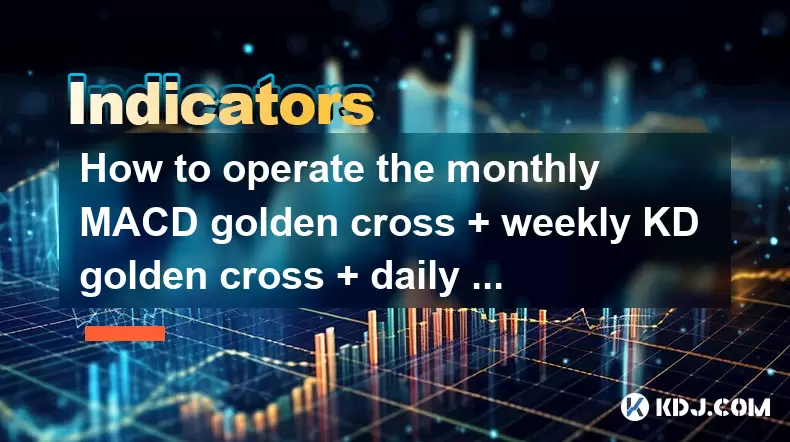
How to operate the monthly MACD golden cross + weekly KD golden cross + daily volume breakthrough?
Jun 15,2025 at 05:36am
Understanding the Strategy: Monthly MACD Golden CrossTo effectively operate the monthly MACD golden cross, traders must first understand what this signal entails. The MACD (Moving Average Convergence Divergence) golden cross occurs when the MACD line crosses above the signal line on a given chart timeframe. When this happens on the monthly chart, it sug...
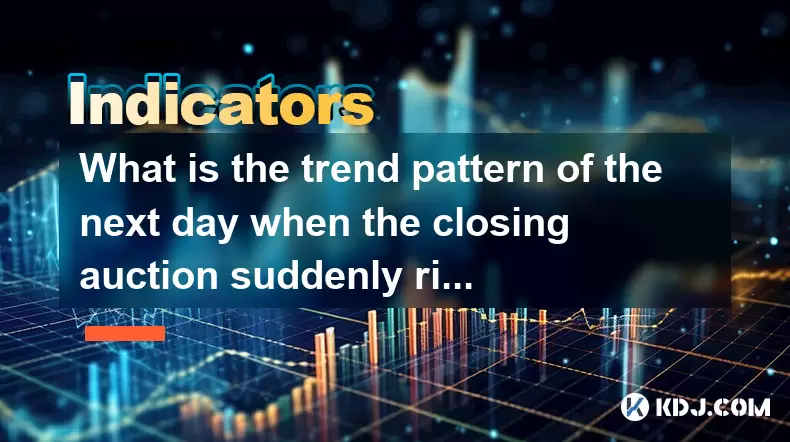
What is the trend pattern of the next day when the closing auction suddenly rises?
Jun 15,2025 at 08:15am
Understanding Closing Auctions in Cryptocurrency MarketsIn the context of cryptocurrency trading, a closing auction refers to a mechanism used by exchanges to determine the closing price of an asset at the end of a trading session. This process typically occurs within a short time window before the market closes for the day and aims to provide a fair an...
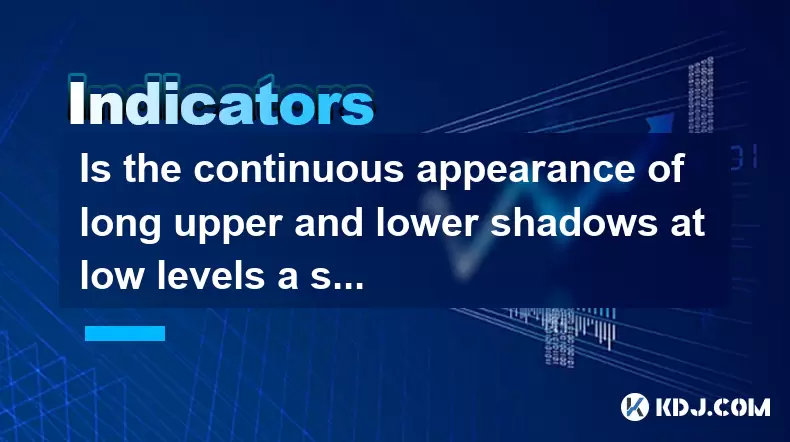
Is the continuous appearance of long upper and lower shadows at low levels a signal of accumulation?
Jun 15,2025 at 01:43am
Understanding Long Upper and Lower Shadows in Candlestick ChartsIn the world of cryptocurrency trading, candlestick patterns are widely used to analyze price movements. A long upper shadow, also known as a wick or tail, indicates that the price rose significantly during the period but was pushed back down by selling pressure. Conversely, a long lower sh...
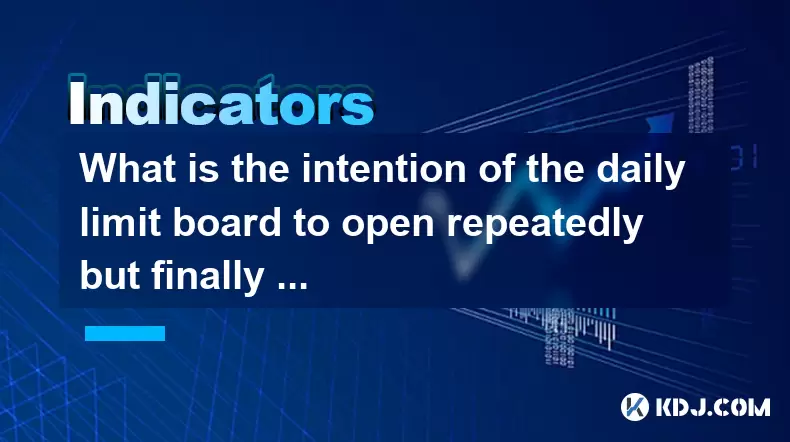
What is the intention of the daily limit board to open repeatedly but finally close?
Jun 15,2025 at 01:08am
Understanding the Daily Limit Board in Cryptocurrency TradingIn cryptocurrency trading, a daily limit board refers to a price movement restriction mechanism applied by certain exchanges or regulatory bodies. This mechanism is primarily used to prevent extreme volatility and panic selling or buying during periods of intense market fluctuation. When an as...

How to calculate the probability of trend continuation after the MACD column divergence?
Jun 14,2025 at 08:01am
Understanding MACD Column DivergenceThe Moving Average Convergence Divergence (MACD) is a widely used technical indicator in cryptocurrency trading. The MACD column, also known as the histogram, represents the difference between the MACD line and the signal line. When price makes a new high or low but the MACD histogram does not confirm this movement, a...
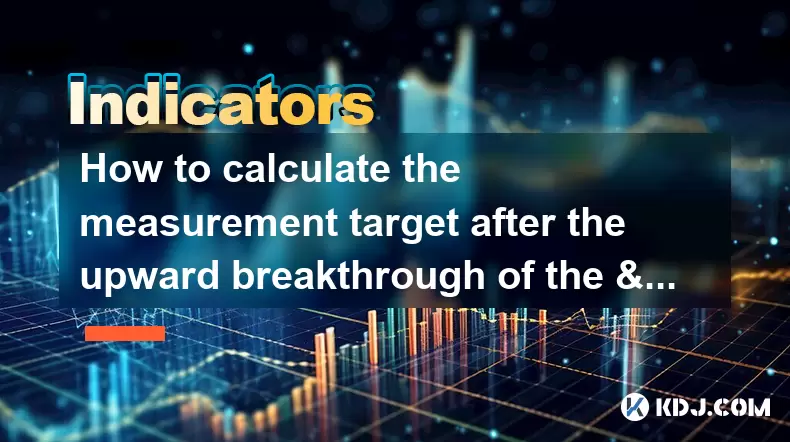
How to calculate the measurement target after the upward breakthrough of the "descending wedge"?
Jun 15,2025 at 05:00am
Understanding the Descending Wedge PatternA descending wedge is a technical analysis pattern typically found in price charts of cryptocurrencies. It is characterized by two converging trendlines: one drawn along a series of lower highs (resistance) and another connecting a series of higher lows (support). This pattern usually indicates a potential bulli...

How to operate the monthly MACD golden cross + weekly KD golden cross + daily volume breakthrough?
Jun 15,2025 at 05:36am
Understanding the Strategy: Monthly MACD Golden CrossTo effectively operate the monthly MACD golden cross, traders must first understand what this signal entails. The MACD (Moving Average Convergence Divergence) golden cross occurs when the MACD line crosses above the signal line on a given chart timeframe. When this happens on the monthly chart, it sug...

What is the trend pattern of the next day when the closing auction suddenly rises?
Jun 15,2025 at 08:15am
Understanding Closing Auctions in Cryptocurrency MarketsIn the context of cryptocurrency trading, a closing auction refers to a mechanism used by exchanges to determine the closing price of an asset at the end of a trading session. This process typically occurs within a short time window before the market closes for the day and aims to provide a fair an...

Is the continuous appearance of long upper and lower shadows at low levels a signal of accumulation?
Jun 15,2025 at 01:43am
Understanding Long Upper and Lower Shadows in Candlestick ChartsIn the world of cryptocurrency trading, candlestick patterns are widely used to analyze price movements. A long upper shadow, also known as a wick or tail, indicates that the price rose significantly during the period but was pushed back down by selling pressure. Conversely, a long lower sh...

What is the intention of the daily limit board to open repeatedly but finally close?
Jun 15,2025 at 01:08am
Understanding the Daily Limit Board in Cryptocurrency TradingIn cryptocurrency trading, a daily limit board refers to a price movement restriction mechanism applied by certain exchanges or regulatory bodies. This mechanism is primarily used to prevent extreme volatility and panic selling or buying during periods of intense market fluctuation. When an as...

How to calculate the probability of trend continuation after the MACD column divergence?
Jun 14,2025 at 08:01am
Understanding MACD Column DivergenceThe Moving Average Convergence Divergence (MACD) is a widely used technical indicator in cryptocurrency trading. The MACD column, also known as the histogram, represents the difference between the MACD line and the signal line. When price makes a new high or low but the MACD histogram does not confirm this movement, a...

How to calculate the measurement target after the upward breakthrough of the "descending wedge"?
Jun 15,2025 at 05:00am
Understanding the Descending Wedge PatternA descending wedge is a technical analysis pattern typically found in price charts of cryptocurrencies. It is characterized by two converging trendlines: one drawn along a series of lower highs (resistance) and another connecting a series of higher lows (support). This pattern usually indicates a potential bulli...
See all articles

























































































